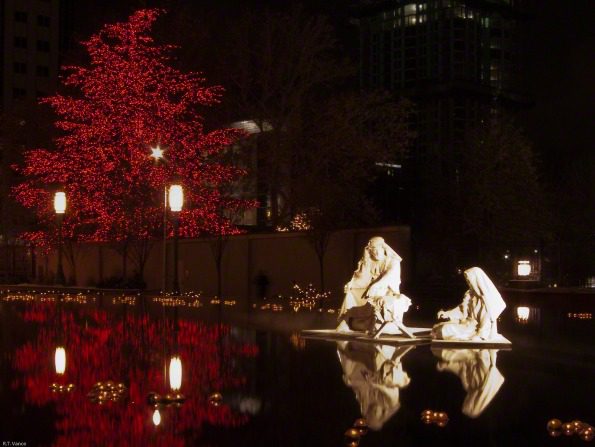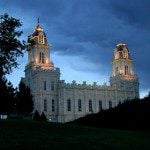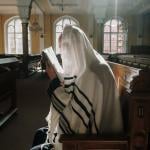
I published this column in the Deseret News for Christmas 2016:
Behind the tinsel and Rudolph the Red-Nosed Reindeer, beyond Santa Claus, Christmas represents an enormously serious claim—the incarnation of God or, literally, God’s “enfleshment.” “And the Word was made flesh,” says John 1:10, “and dwelt among us.” It’s a proposition unique to Christianity among the Abrahamic religions; Judaism and Islam make no such claim about the divine.
In the first chapter of Genesis, God repeatedly observes that his creation is “good.” And finally, when he’s done, we’re told that “God saw every thing that he had made, and, behold, it was very good” (1:31).
In the Christmas narratives, however, divine approval is registered even more remarkably. God himself enters into the physical world, and takes flesh, matter, upon himself. As a lesser-known verse of the carol “Hark! the herald angels sing” exhorts us,
Veiled in flesh the Godhead see;
Hail th’incarnate Deity,
Pleased with us in flesh to dwell,
Jesus our Emmanuel.
Thereafter, he redeems that flesh in the resurrection and claims it forever. The tomb is empty, but the body has not been abandoned. “Behold my hands and my feet, that it is I myself,” he tells his astonished disciples after his crucifixion. “Handle me, and see; for a spirit hath not flesh and bones, as ye see me have” (Luke 24:39).
This story stands in dramatic contrast to many other faiths and philosophies, which have historically taught that death represents a desirable deliverance from the body and the bondage of materiality. “The true philosophers,” says Socrates in Plato’s fourth-century BC dialogue “Phaedo,” “are ever studying death.” Why? Because they aspire to live lives of pure reason, freed from fleshly limitations. Thus, the great third-century AD Neoplatonic philosopher Plotinus, says his biographer Porphyry, was ashamed even to have a birthday, because it was on that day that his immaterial spirit had fallen into the swamp of matter. Even on the edges of Christianity itself—for example, in the ancient Gnostic heresies that threatened the mainstream Christian movement during the first centuries after Jesus—death was thought to offer an escape from the evil material world.
Not so in genuinely apostolic Christianity. “God,” wrote Paul to the Corinthians, “was in Christ, reconciling the world unto himself” (2 Corinthians 5:19). This earth, physical reality, shouldn’t be rejected or discarded. Both long before the birth of Jesus and decades after his ascension into heaven, believers were promised “new heavens and a new earth” (Isaiah 65:17; Revelation 21:1). Although fallen and flawed, our material world is fundamentally good and worthy of salvation. Indeed, it will be made worthy of those who eventually inherit heaven. “Blessed are the meek,” the Savior himself taught in his Sermon on the Mount, “for they shall inherit the earth” (Matthew 5:5).
Some worldviews would ask why anybody would even want it. Who would seek to drag this physical carcass of a body around forever? But Jesus’ literal resurrection from the dead testifies that we’ll do so: “Ye men of Galilee,” ask the angels after Christ’s ascension, “why stand ye gazing up into heaven? this same Jesus, which is taken up from you into heaven, shall so come in like manner as ye have seen him go into heaven” (Acts 1:11). “Beloved,” says 1 John 3:2, “now are we the sons of God, and it doth not yet appear what we shall be: but we know that, when he shall appear, we shall be like him; for we shall see him as he is.”
Matter itself, including our bodies, will be redeemed. Christ, the apostle Paul says, “shall change our vile body, that it may be fashioned like unto his glorious body, according to the working whereby he is able even to subdue all things unto himself” (Philippians 3:21), “and the dead shall be raised incorruptible” (1 Corinthians 15:52). “He became man,” explained St. Athanasius of Alexandria (d. AD 373) in his treatise “On the Incarnation,” “that we might be made divine.”
Transcending mere sentimentality about “the Babe of Bethlehem,” Christmas commemorates the beginning of that redemptive process; the events associated with Easter guarantee it.
There can be no better news, no tidings more glad than these.
Hail the heav’nly Prince of Peace!
Hail the Sun of Righteousness!
Light and life to all He brings,
Ris’n with healing in His wings.
Mild He lays His glory by,
Born that man no more may die.
Born to raise the sons of earth,
Born to give them second birth.
***
Some of you might enjoy this: “First Ever Asia Area Christmas Devotional Now Live: Members across Asia come together to retell the nativity story through beloved Christmas music and performances by Asia to the world”
***
In my blog entry for Friday, I mentioned that there were two points during the Thursday night performance of Christmas with the Tabernacle Choir when I was emotionally affected and when, embarrassingly for an unemotional Scandinavian, my eyes began to moisten. But I only actually identified one of them: It was when the Choir and the Orchestra at Temple Square performed back to back renditions of two of my very favorite pieces of music: “Lo, How a Rose E’er Blooming” (Es ist ein Ros’ entsprungen) and Pachelbel’s Canon in D (arranged as a choral piece entitled “Hosanna in excelsis”).
The other came during Sir David Suchet’s narration of the remarkable story of Nicholas Winton (1909-2015), which I commend to your attention. A pleasant surprise for the audience was that Mr. Winton’s son was present that evening. I presume, but I don’t know for certain, that he was there for the Friday and Saturday evening performances, as well. So I didn’t want to mention it, hoping not to spoil the surprise.
And I can now mention this article, as well, which gives the surprise away: “What makes the Tabernacle Choir Christmas concert so special? Detective Poirot has the answer: Disney star Lea Salonga and ‘Poirot’ actor David Suchet opened up about the 2022 Tabernacle Choir Christmas concert”
Posted from Bountiful, Utah












